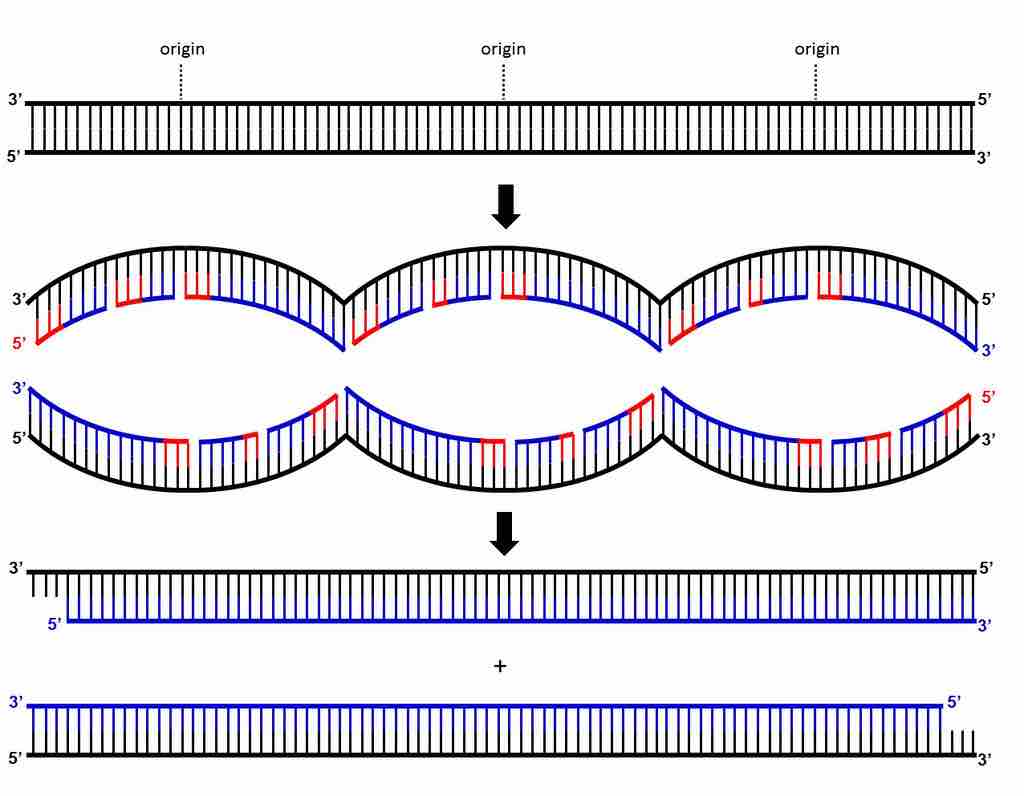Telomere Replication

The telomere end problem
A simplified schematic of DNA replication where the parental DNA (top) is replicated from three origins of replication, yielding three replication bubbles (middle) before giving rise to two daughter DNAs (bottom). Parental DNA strands are black, newly synthesized DNA strands are blue, and RNA primers are red. All RNA primers will be removed by Rnase H and FEN1, leaving gaps in the newly-synthesized DNA strands (not shown.) DNA Polymerase and Ligase will replace all the RNA primers with DNA except the RNA primer at the 5' ends of each newly-synthesized (blue) strand. This means that each newly-synthesized DNA strand is shorter at its 5' end than the equivalent strand in the parental DNA.
Source
Boundless vets and curates high-quality, openly licensed content from around the Internet. This particular resource used the following sources: